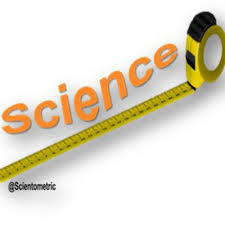New scientific indicators

rapid measurement and evaluation of scientific productions at the macro level, measurement and evaluation of scientific productions using internationally accepted indicators and providing the possibility of comparing them, the difficulty of qualitative evaluation of the huge volume of international scientific productions and the necessity of using statistical tools, identifying The scientific fields to be considered in the leading countries and their comparison with competing countries, in order to formulate correct strategic plans and to help the future thinking of science, are considered among the necessities of scientometrics in the world.
Scientometric researchers are constantly trying to show the qualities in the form of quantities that express that quality. These quantitative measures are known as "indexes" in scientometrics. The importance of indicators is: checking the performance, influence, ranking, comparison and promotion of people in academic environments. Scientometrics does not only rely on scientific articles, other scientific sources such as books, patents, theses, government reports, etc. can be the basis of scientometric studies. Some of the latest indicators are discussed below:
Journal Impact Factor (JIF)
The magazine's impact factor index was introduced to the international community in 1983. Currently, the set of impact factor indicators under the title of Journal Citation Report or JCR is published annually by Clarivit Analytics Institute. The impact factor (IF) is a quantity that shows the average number of citations to the articles of a scientific journal. The impact factor can be a measure to show the amount of scientific influence of a journal in a specific scientific field. In a scientific field, journals with a higher impact factor are more important than other journals. One of the things that can have a direct effect on the impact factor is self-citation. Journals with a higher impact factor publish articles that are more cited compared to articles from journals with a lower impact factor.
·EigenFactor Score of the magazine
The calculation of this index for each journal is based on the number of citations received by a journal in a 5-year period in JCR, taking into account which journals these citations were received from. Based on this, journals with higher number of citations will have more impact and influence than journals with lower number of citations. Also, this index does not consider self-citations and self-citations have no effect in its calculation; That is, the references of one article to another article from the same journal are excluded from the calculation, and as a result, the penetration coefficient of the journal is not affected by self-citation. In addition, the total "EigenFactor Score" reported in JCR is equal to 100. The main idea in creating this index is that receiving one citation from high quality journals is more valuable than receiving multiple citations from lower quality journals.
Immediacy Index
Urgency index shows how quickly articles published in a journal receive citations. To calculate, the number of citations received by articles in a journal in a given year is divided by the number of articles in the same year.
Literature Obsolescence
The half-life index clarifies the role of time in the productivity of information. Using this index, it can be shown whether the usefulness of articles and books decreases with the passage of time or not. The meaning of the half-life of the texts is the period of time during which half of the texts citing the cited scientific texts in the desired scientific fields have been published. In other words, half-life is the period of time during which half of the references of a journal have been published. Studies show that half of the references (citations) of newly published articles in the last two years go back to the writings of the same year.
After a period of ten or fifteen years (depending on the subject), the articles of different disciplines lose their usefulness as cited sources. Sciences that are mostly theoretical (such as mathematics) have a long half-life, and sciences that depend on new topics, modernity and technology, such as medicine, have a short half-life.
Cited Half-Life
The half-life of references or the half-life of citations is the number of years that must go back from the evaluation year to see fifty percent of the total references to the journal in the evaluation year. In other words, this index shows the period of time when half of all citations have been made to that journal, and in fact, it expresses the speed of reduction in the number of references to the journal. It is obvious that when articles in a journal lose their value for references early (articles are superficial and become worthless very quickly), only new articles in the journal are referenced. This causes the half-life of journal references to decrease. Therefore, the longer the half-life of citations to the journal, it indicates that the value of journal articles has been preserved over time and is still being referenced. In general, the longer the half-life of references to a journal, the higher the value of the journal.
Mathew Value
This indicator is a modified form of the impact factor that was introduced by Muij in 2006. Matthew's value is calculated in a five-year period and in a specific subject, he divides the articles of the same magazine and in the same period, and measures the obtained number with the same proportions in the entire field of research. The way to calculate it is to divide the number of citations to the articles of a journal in a five-year period by the number of articles in the same journal in the same period of time, which measures the resulting number with the same proportions in the entire field of research.
Snap index (Source Normalized Impac
